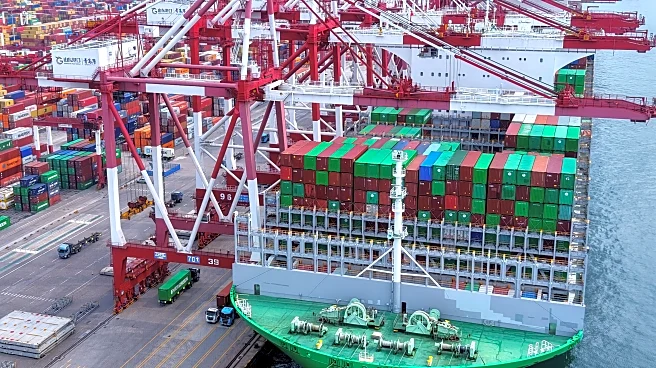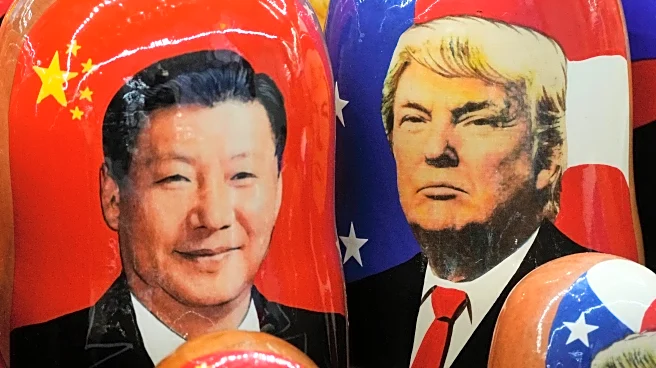Rapid Read • 8 min read
The United States and China have agreed to extend their tariff truce for an additional 90 days, as major sticking points continue to hinder a comprehensive trade deal. This extension was announced just hours before higher tariffs were set to be implemented, following recent bilateral talks in Stockholm. The extension aims to provide more time for negotiations, with both countries planning a leaders' summit later this year to address unresolved issues. Key priorities for China include the removal of tariffs, easing technology restrictions, and lifting sanctions on Chinese entities. Meanwhile, President Trump is focused on narrowing the trade deficit, which may involve increased Chinese purchases of American goods and services. The extension allows both sides to pause 24% tariffs on each other's goods while maintaining a 10% levy. Despite the extension, experts warn that the trade war may persist due to unresolved issues such as China's industrial overcapacity.
AD
The extension of the tariff truce is significant as it provides a temporary reprieve from escalating trade tensions between the world's two largest economies. The ongoing negotiations have substantial implications for global trade, affecting industries reliant on U.S.-China commerce. American agricultural sectors, particularly soybean producers, stand to benefit from increased Chinese purchases, which could help mitigate the trade deficit. However, unresolved issues like technology export controls and China's industrial policies continue to pose challenges. The outcome of these negotiations could influence global supply chains, impact economic growth, and shape future trade policies. The extension also highlights the strategic importance of rare earth minerals, with China leveraging its dominance in this sector to negotiate concessions.
The next steps involve continued diplomatic efforts to arrange a summit between President Trump and Chinese President Xi Jinping, potentially in Beijing. This summit is expected to address key issues and seek a durable trade agreement. Both countries are likely to engage in further negotiations to resolve contentious points, including technology export controls and rare earth mineral trade. The extension of the tariff truce suggests that additional extensions may occur until a comprehensive deal is reached. Stakeholders, including businesses and policymakers, will closely monitor developments, as the outcome could have far-reaching effects on international trade and economic stability.
AD
More Stories You Might Enjoy











